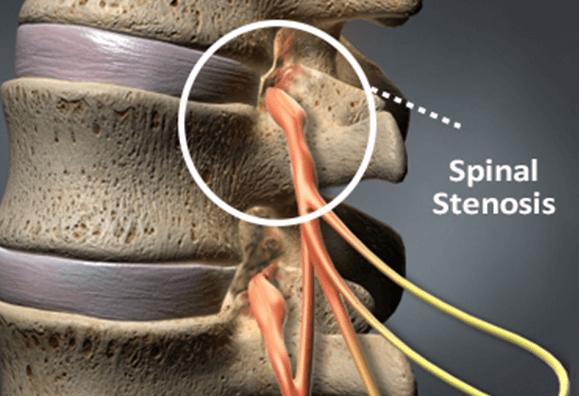Spaces within the spinal column allow nerves to travel to the arms, legs, and other areas. When these spaces become narrower due to a condition known as spinal stenosis, pressure can be placed on the spinal cord and the nerves exiting the spine. This compression may disrupt nerve function and affect daily activities.
What Is Spinal Stenosis?
Spinal stenosis is the narrowing of one or more spaces within the spine. This condition most often occurs in the lower back and the neck. The narrowing reduces the amount of space available for the spinal cord and the nerves that branch out from it. While some people are born with a small spinal canal, most cases of spinal stenosis develop over time due to age-related changes in the spine.
Degenerative processes are a common cause. The discs that cushion the vertebrae can lose water content and flatten over time, and ligaments thicken. Bone spurs may also grow on the vertebrae and extend into the spinal canal. These changes can gradually reduce the open spaces within the spine, potentially leading to compression of nerve tissue. The severity of the narrowing varies from person to person.
What Are the Symptoms?
The presence and intensity of symptoms depend on the location and degree of nerve compression. Some individuals with spinal stenosis on imaging scans may not experience any symptoms at all. When symptoms do appear, they often develop gradually and can fluctuate.
For lumbar stenosis, symptoms may include:
- Pain or cramping in one or both legs when standing for long periods or walking.
- Numbness, tingling, or weakness in a leg or foot.
- Low back pain.
- A feeling of relief when leaning forward or sitting.
For cervical stenosis, symptoms can affect the neck, shoulders, arms, and even the legs. These may include:
- Neck pain.
- Numbness, tingling, or weakness in an arm, hand, or leg.
- Difficulties with balance and walking.
- Issues with hand coordination.
In severe cases, profound or progressive weakness or changes in bowel or bladder function can occur, which signals a need for prompt medical evaluation.
How Is It Treated?
Treatment for spinal stenosis is focused on managing symptoms and improving function. The approach depends on the specifics of each case. Most people begin with conservative care.
Non-Surgical Management
Physical therapy is a cornerstone of management, involving targeted exercises to strengthen the back, abdominal, and leg muscles. Therapists may also provide training on posture and body mechanics to reduce strain on the spine. Modifying activities, such as avoiding those that trigger symptoms, can be beneficial.
A clinician may suggest nonsteroidal anti-inflammatory drugs (NSAIDs) to help manage pain. Applying heat or ice can also offer temporary relief from discomfort. In some situations, therapeutic traction may be used to help alleviate pressure on nerve roots.
Interventional and Surgical Options
When conservative methods do not provide sufficient relief, other options may be explored. Epidural steroid injections are a non-surgical procedure where medication is delivered near the compressed nerves to help reduce inflammation and pain signals. Radiofrequency ablation is another technique that uses heat to disrupt the function of specific nerves that transmit pain. Surgery may become a topic of discussion if symptoms are severe, progressive, or significantly impact quality of life.
Meet With a Spine Specialist
Learning ways to manage symptoms is a key part of navigating this condition. A thorough evaluation with a spine specialist can provide a precise diagnosis and a personalized management plan. A specialist can discuss your specific symptoms, review diagnostic imaging, and explain the available options for your situation.





